Multi-Label Classification and Automatic Damage Detection of Masonry Heritage Building through CNN Analysis of Infrared Thermal Imaging
Abstract
1. Introduction
2. Site Introduction
3. Field Test
3.1. Infrared Thermal Imaging
3.2. Data Collection
4. Automatic Damage Detection
4.1. Analysis of Infrared Thermal Images
4.2. CNN Algorithm
5. Results and Discussion of CNN Analysis
6. Conclusions
- (1)
- A total of 2400 infrared thermal images were collected by selecting 8 multi-labels of the heritage building. In the infrared thermal image, the thermal energy change appeared at the boundary of each object, and the thermal energy change became a feature that can classify multi-labels in the deep-learning algorithm. The collected images were analysed with a grey channel histogram and a 3D colour scale. Among the eight multi-labels, doors and artworks had a majority of pixels with a greyscale of over 200, and arches, vents, and windows showed a wide distribution of low thermal energy in the histogram. It is confirmed that the stonewall, brick wall, and cracks have a similar histogram distribution pattern but are distinguished by the three-dimensional colour scale.
- (2)
- In this paper, the CNN algorithm is applied for multi-label classification and automatic damage detection of the heritage building. Brick wall, stonewall, and window showed 97.78%, 97.82%, and 96.42% precision, respectively, and cracks showed 95.83% precision. Door showed the lowest precision of 93.87%. The door that showed the lowest precision showed a sensitivity of 100%. Although the detection accuracy of the door is lower than others, it can be seen that the classifier reacts sensitively to the door. Artwork, brick wall, and stonewall showed lower sensitivity than precision at 97.87%, 93.61%, and 95.74%, respectively. Cracks showed sensitivity equal to precision at 95.83%. The average precision and average sensitivity for the eight categories of heritage buildings were 97.72% and 97.43%, respectively.
- (3)
- The misclassified images are analysed in order to understand the causes of the misclassification of infrared thermal images in detail. This paper defined the causes of misclassification as the following two causes: misclassification by multiple objects and misclassification by the perception of the CNN algorithm. In order to minimize such misclassification, it is expected that the classification accuracy can be improved if the data used for CNN analysis are applied together with digital images and other image techniques.
Author Contributions
Funding
Data Availability Statement
Acknowledgments
Conflicts of Interest
References
- Almssad, A.; Almusaed, A.; Homod, R.Z. Masonry in the Context of Sustainable Buildings: A Review of the Brick Role in Architecture. Sustainability 2022, 14, 14734. [Google Scholar] [CrossRef]
- Yavartanoo, F.; Kang, T.H.-K. Retrofitting of unreinforced masonry structures and considerations for heritage-sensitive constructions. J. Build. Eng. 2022, 49, 103993. [Google Scholar] [CrossRef]
- Uzdil, O.; Cosgun, T.; Sayin, B.; Akcay, C. Seismic performance evaluation and strengthening proposal for a reconstruction project of a historic masonry building demolished in the 1940s. J. Build. Eng. 2023, 66, 105914. [Google Scholar] [CrossRef]
- Mesquita, E.; Arêde, A.; Pinto, N.; Antunes, P.; Varum, H. Long-term monitoring of a damaged historic structure using a wireless sensor network. Eng. Struct. 2018, 161, 108–117. [Google Scholar] [CrossRef]
- Shen, L.; Yang, B.; Yang, Y.; Yang, X.; Zhu, W.; Wang, Q. Real-Time Monitoring for Monolithic Movement of a Heritage Curtilage Using Wireless Sensor Networks. Buildings 2022, 12, 1785. [Google Scholar] [CrossRef]
- Diz-Mellado, E.; Mascort-Albea, E.J.; Romero-Hernández, R.; Galán-Marín, C.; Rivera-Gómez, C.; Ruiz-Jaramillo, J.; Jaramillo-Morilla, A. Non-destructive testing and Finite Element Method integrated procedure for heritage diagnosis: The Seville Cathedral case study. J. Build. Eng. 2021, 37, 102134. [Google Scholar] [CrossRef]
- Tejedor, B.; Lucchi, E.; Bienvenido-Huertas, D.; Nardi, I. Non-destructive techniques (NDT) for the diagnosis of heritage buildings: Traditional procedures and futures perspectives. Energy Build. 2022, 263, 112029. [Google Scholar] [CrossRef]
- Jalón, M.L.; Chiachío, J.; Gil-Martín, L.M.; Hernández-Montes, E. Probabilistic identification of surface recession patterns in heritage buildings based on digital photogrammetry. J. Build. Eng. 2021, 34, 101922. [Google Scholar] [CrossRef]
- Lerones, P.M.; Vélez, D.O.; Rojo, F.G.; Gómez-García-Bermejo, J.; Casanova, E.Z. Moisture detection in heritage buildings by 3D laser scanning. Stud. Conserv. 2016, 61, 46–54. [Google Scholar] [CrossRef]
- Zahiri, Z.; Laefer, D.F.; Gowen, A. Characterizing building materials using multispectral imagery and LiDAR intensity data. J. Build. Eng. 2021, 44, 102603. [Google Scholar] [CrossRef]
- Moyano, J.; Justo-Estebaranz, Á.; Nieto-Julián, J.E.; Barrera, A.O.; Fernández-Alconchel, M. Evaluation of records using terrestrial laser scanner in architectural heritage for information modeling in HBIM construction: The case study of the La Anunciación church (Seville). J. Build. Eng. 2022, 62, 105190. [Google Scholar] [CrossRef]
- Costanzo, A.; Falcone, S.; Piana, C.L.; Lapenta, V.; Musacchio, M.; Sgamellotti, A.; Buongiorno, M.F. Laser Scanning Investigation and Geophysical Monitoring to Characterise Cultural Heritage Current State and Threat by Traffic-Induce Vibrations: The Villa Farnesina in Rome. Remote Sens. 2022, 14, 5818. [Google Scholar] [CrossRef]
- Nagy, G.; Ashraf, F. HBIM platform & smart sensing as a tool for monitoring and visualizing energy performance of heritage buildings. Dev. Built Environ. 2021, 8, 100056. [Google Scholar] [CrossRef]
- Silva, H.E.; Coelho GB, A.; Henriques FM, A. Climate monitoring in World Heritage List buildings with low-cost data loggers: The case of the Jerónimos Monastery in Lisbon (Portugal). J. Build. Eng. 2020, 28, 101029. [Google Scholar] [CrossRef]
- Haugen, A.; Bertolin, C.; Leijonhufvud, G.; Olstad, T.; Broström, T. A Methodology for Long-Term Monitoring of Climate Change Impacts on Historic Buildings. Geosciences 2018, 8, 370. [Google Scholar] [CrossRef]
- Hatır, M.E.; İnce, İ.; Bozkurt, F. Investigation of the effect of microclimatic environment in historical buildings via infrared thermography. J. Build. Eng. 2022, 57, 104916. [Google Scholar] [CrossRef]
- Mishra, M. Machine learning techniques for structural health monitoring of heritage buildings: A state-of-the-art review and case studies. J. Cult. Herit. 2021, 47, 227–245. [Google Scholar] [CrossRef]
- Mishra, M.; Bhatia, A.S.; Maity, D. Predicting the compressive strength of unreinforced brick masonry using machine learning techniques validated on a case study of a museum through nondestructive testing. J. Civ. Struct. Health Monit. 2020, 10, 389–403. [Google Scholar] [CrossRef]
- Mishra, M.; Barman, T.; Ramana, G.V. Artificial intelligence-based visual inspection system for structural health monitoring of cultural heritage. J. Civ. Struct. Health Monit. 2022. [Google Scholar] [CrossRef]
- Boesgaard, C.; Hansen, B.V.; Kejser, U.B.; Mollerup, S.H.; Ryhl-Svendsen, M.; Torp-Smith, N. Prediction of the indoor climate in cultural heritage buildings through machine learning: First results from two field tests. Herit. Sci. 2022, 10, 176. [Google Scholar] [CrossRef]
- Monna, F.; Rolland, T.; Denaire, A.; Navarro, N.; Granjon, L.; Barbé, R.; Chateau-Smith, C. Deep learning to detect built cultural heritage from satellite imagery. -Spatial distribution and size of vernacular houses in Sumba, Indonesia-. J. Cult. Herit. 2021, 52, 171–183. [Google Scholar] [CrossRef]
- Cui, L.; Shao, X.; Mago, B.; Ravi, R.V. Digital intangible cultural heritage management using deep learning models. Aggress. Violent Behav. 2021, 101680. [Google Scholar] [CrossRef]
- Chandra, S.; AlMansoor, K.; Chen, C.; Shi, Y.; Seo, H. Deep Learning Based Infrared Thermal Image Analysis of Complex Pavement Defect Conditions Considering Seasonal Effect. Sensors 2022, 22, 9365. [Google Scholar] [CrossRef] [PubMed]
- Chen, C.; Seo, H.; Zhao, Y. A novel pavement transverse cracks detection model using WT-CNN and STFT-CNN for smartphone data analysis. Int. J. Pavement Eng. 2022, 23, 4372–4384. [Google Scholar] [CrossRef]
- Chen, C.; Seo, H.; Jun, C.H.; Zhao, Y. A potential crack region method to detect crack using image processing of multiple thresholding. Signal Image Video Process. 2022, 16, 1673–1681. [Google Scholar] [CrossRef]
- Chen, C.; Chandra, S.; Seo, H. Automatic pavement defect detection and classification using RGB-thermal images based on hierarchical residual attention network. Sensors 2022, 22, 5781. [Google Scholar] [CrossRef]
- Chen, C.; Chandra, S.; Han, Y.; Seo, H. Deep Learning-Based Thermal Image Analysis for Pavement Defect Detection and Classification Considering Complex Pavement Conditions. Remote Sens. 2022, 14, 106. [Google Scholar] [CrossRef]
- Seo, H.; Zhao, Y.; Chen, C. Displacement Mapping of Point Clouds for Retaining Structure Considering Shape of Sheet Pile and Soil Fall Effects during Excavation. J. Geotech. Geoenviron. Eng. 2022, 148, 04022016. [Google Scholar] [CrossRef]
- Zhao, Y.; Seo, H.; Chen, C. Displacement analysis of point cloud removed ground collapse effect in SMW by CANUPO machine learning algorithm. J. Civ. Struct. Health Monit. 2022, 12, 447–463. [Google Scholar] [CrossRef]
- Zhao, Y.; Seo, H.; Chen, C. Displacement mapping of point clouds: Application of retaining structures composed of sheet piles. J. Civ. Struct. Health Monit. 2021, 11, 915–930. [Google Scholar] [CrossRef]
- Seo, H. Long-term Monitoring of zigzag-shaped concrete panel in retaining structure using laser scanning and analysis of influencing factors. Opt. Lasers Eng. 2021, 139, 106498. [Google Scholar] [CrossRef]
- Seo, H. Monitoring of CFA pile test using three dimensional laser scanning and distributed fiber optic sensors. Opt. Lasers Eng. 2020, 130, 106089. [Google Scholar] [CrossRef]
- Seo, H.; Zhao, Y.; Chen, C. Displacement Estimation Error in Laser Scanning Monitoring of Retaining Structures Considering Roughness. Sensors 2021, 21, 7370. [Google Scholar] [CrossRef] [PubMed]
- Seo, H. Tilt mapping for zigzag-shaped concrete panel in retaining structure using terrestrial laser scanning. J. Civ. Struct. Health Monit. 2021, 11, 851–865. [Google Scholar] [CrossRef]
- Seo, H. 3D roughness measurement of failure surface in CFA pile samples using three-dimensional laser scanning. Appl. Sci. 2021, 11, 2713. [Google Scholar] [CrossRef]
- Seo, H.; Choi, H.; Park, J.; Lee, I.M. Crack detection in pillars using infrared thermographic imaging. Geotech. Test. J. 2016, 40, 371–380. [Google Scholar] [CrossRef]
- Sihombing, J.; Farisi, R.R.; Ardiansyah, P.R. Analysis of relationship between strength compression and young modulus of red brick and white brick on application of strength and stiffness building construction with linear regression test. J. Civ. Eng. Environ. Sci. 2020, 6, 16–21. [Google Scholar] [CrossRef]
- Seo, H. Infrared thermography for detecting cracks in pillar models with different reinforcing systems. Tunn. Undergr. Space Technol. 2021, 116, 104118. [Google Scholar] [CrossRef]
- Zhao, Y.; Han, Y.; Chen, C.; Seo, H. Crack detection in frozen soils using infrared thermographic camera. Sensors 2022, 22, 885. [Google Scholar] [CrossRef]
- Mostafa, S.; Wu, F.-X. Neural Engineering Techniques for Autism Spectrum Disorder, Volume 1: Imaging and Signal Analysis; Elsevier: Amsterdam, The Netherlands, 2021; pp. 23–38. [Google Scholar]
- Djordjevic, I.B. Quantum Information Processing, Quantum Computing, and Quantum Error Correction: An Engineering Approach, 2nd ed.; Elsevier: Amsterdam, The Netherlands, 2021; pp. 619–701. [Google Scholar]
- Chen, C.; Seo, H.; Jun, C.H.; Zhao, Y. Pavement crack detection and classification based on fusion feature of LBP and PCA with SVM. Int. J. Pavement Eng. 2022, 23, 3274–3283. [Google Scholar] [CrossRef]
- Cakir, F.; He, K.; Xia, X.; Kulis, B.; Sclaroff, S. Deep metric learning to rank. In Proceedings of the 2019 IEEE/CVF Conference on Computer Vision and Pattern Recognition (CVPR), Long Beach, CA, USA, 15–20 June 2019; pp. 1861–1870. [Google Scholar] [CrossRef]
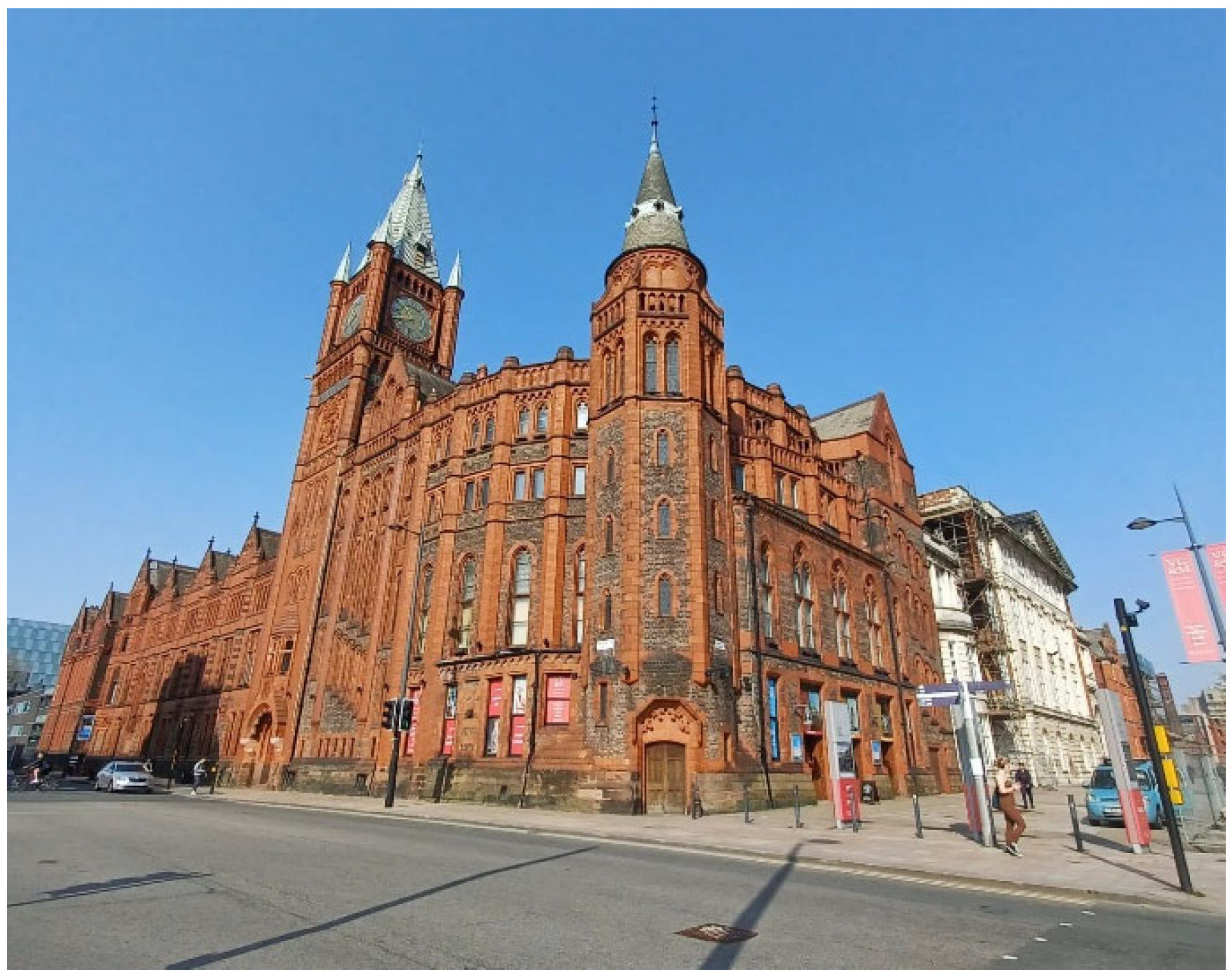
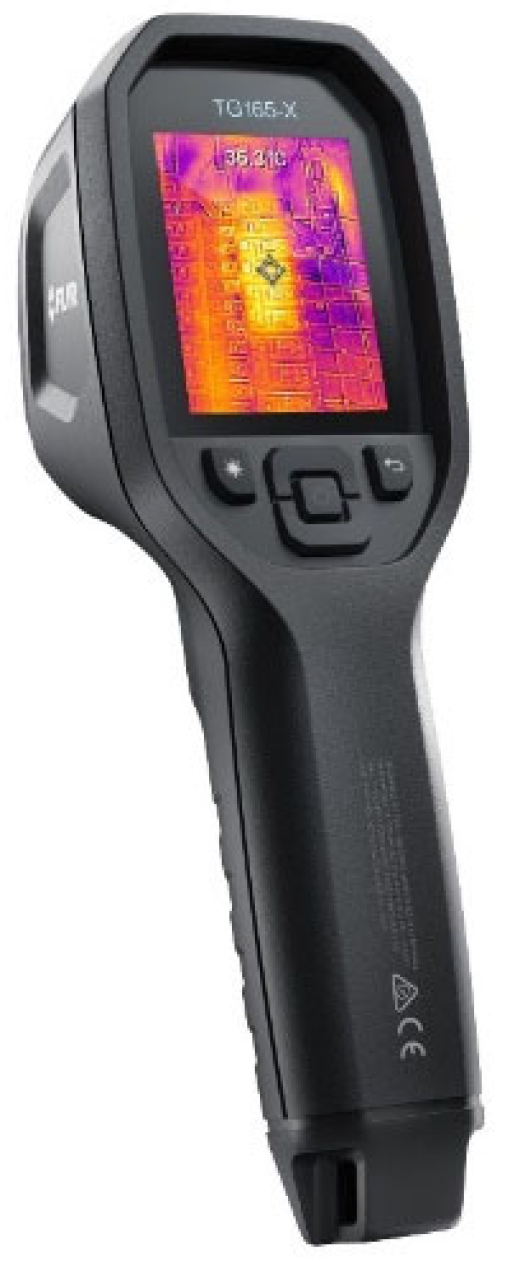
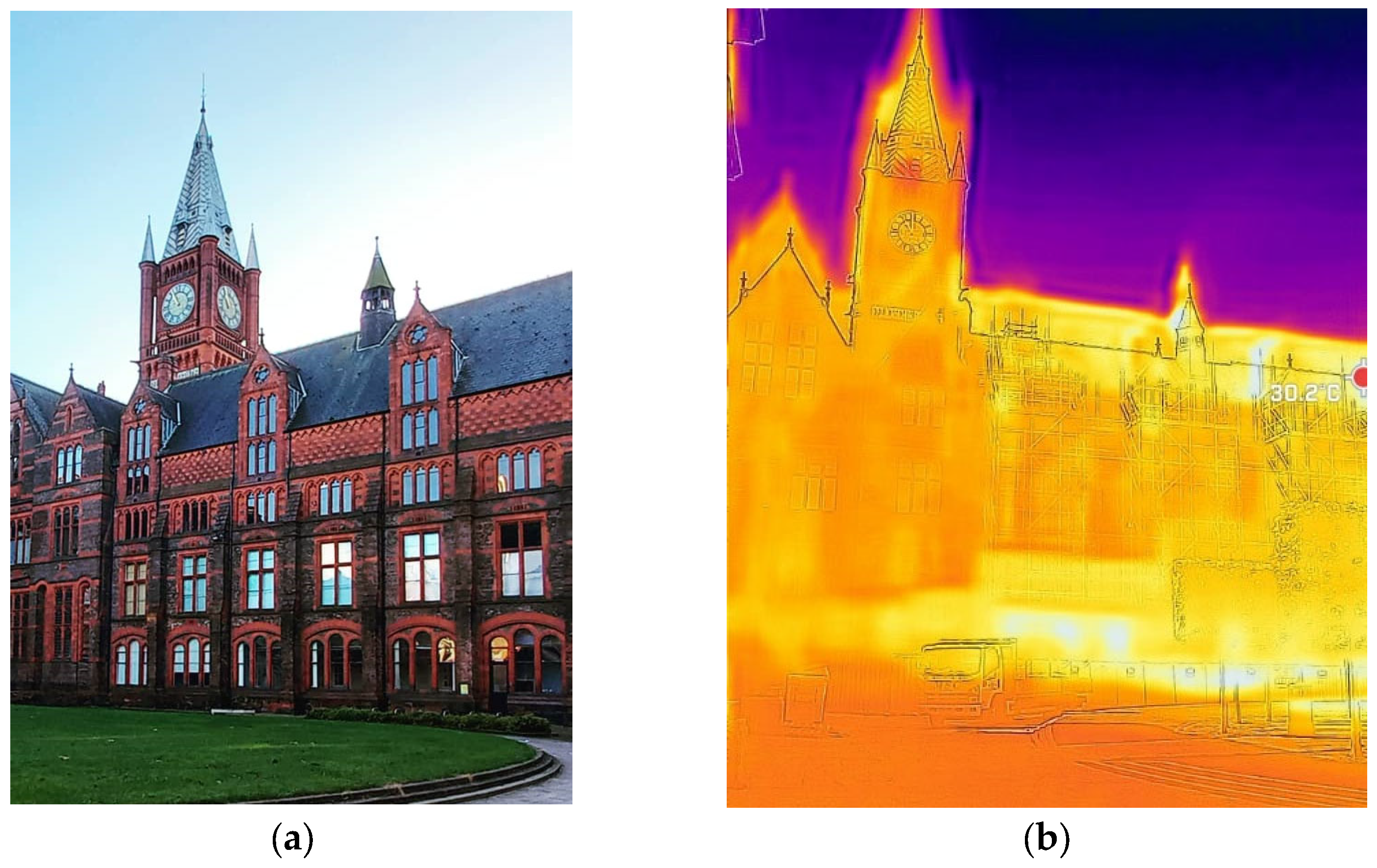
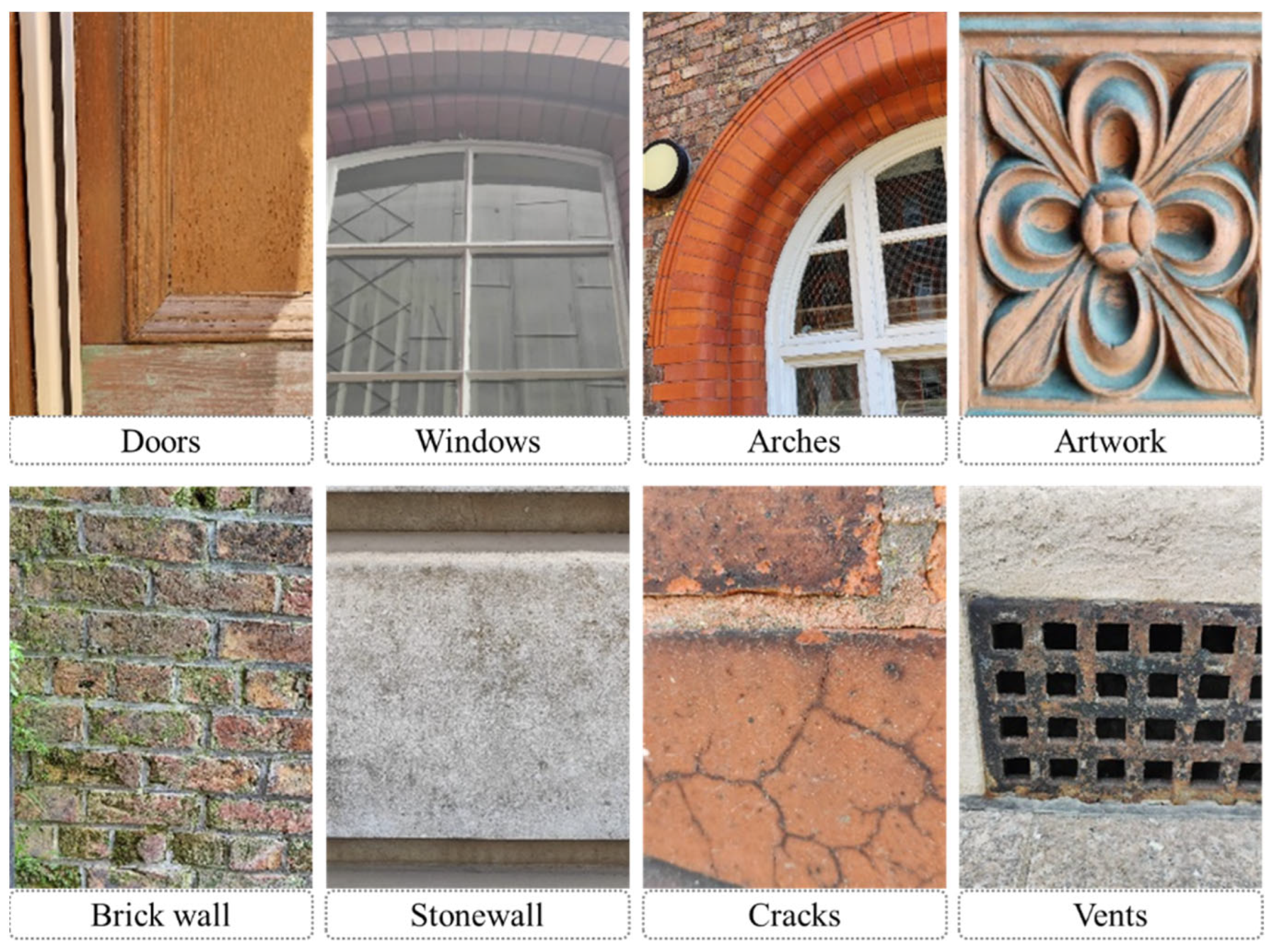
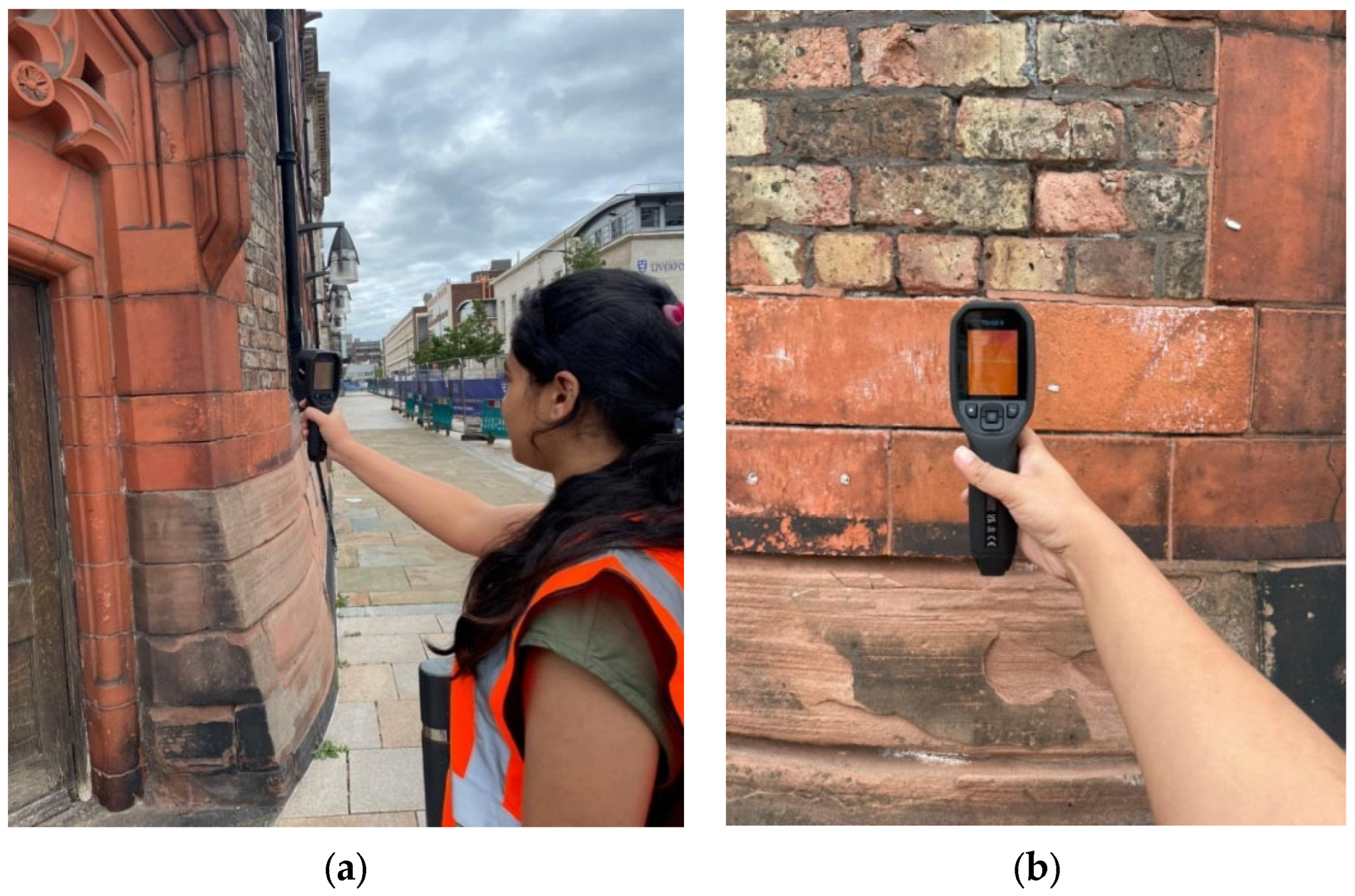
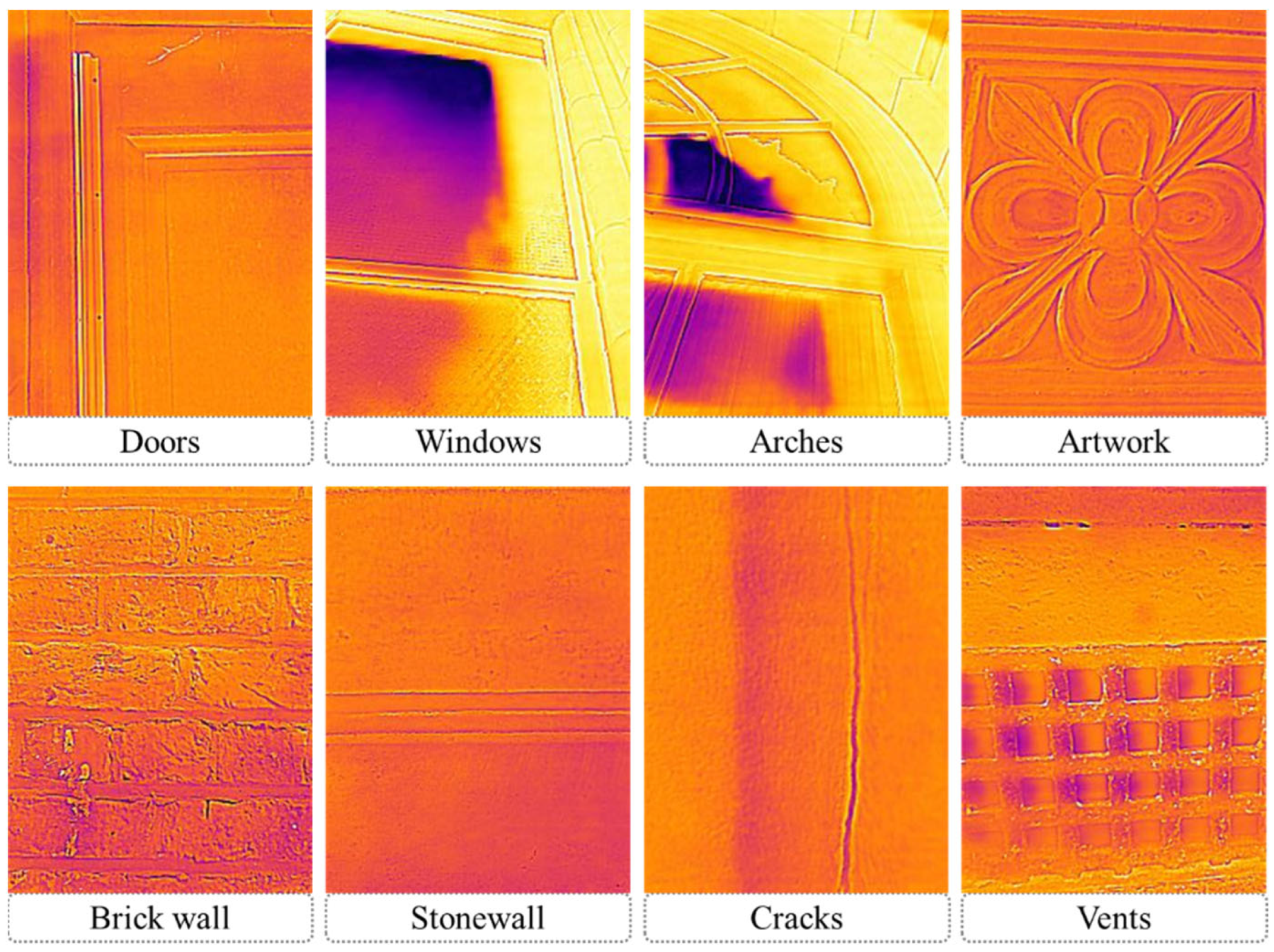


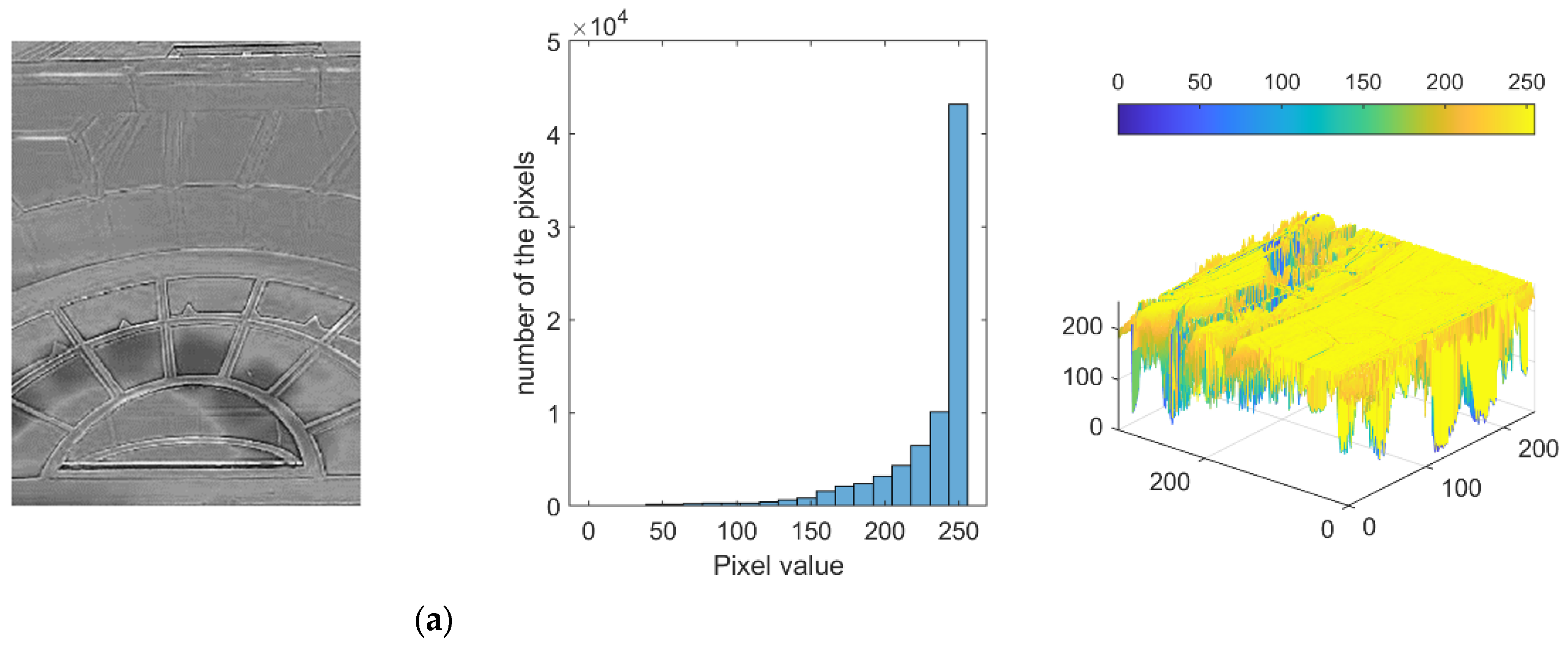
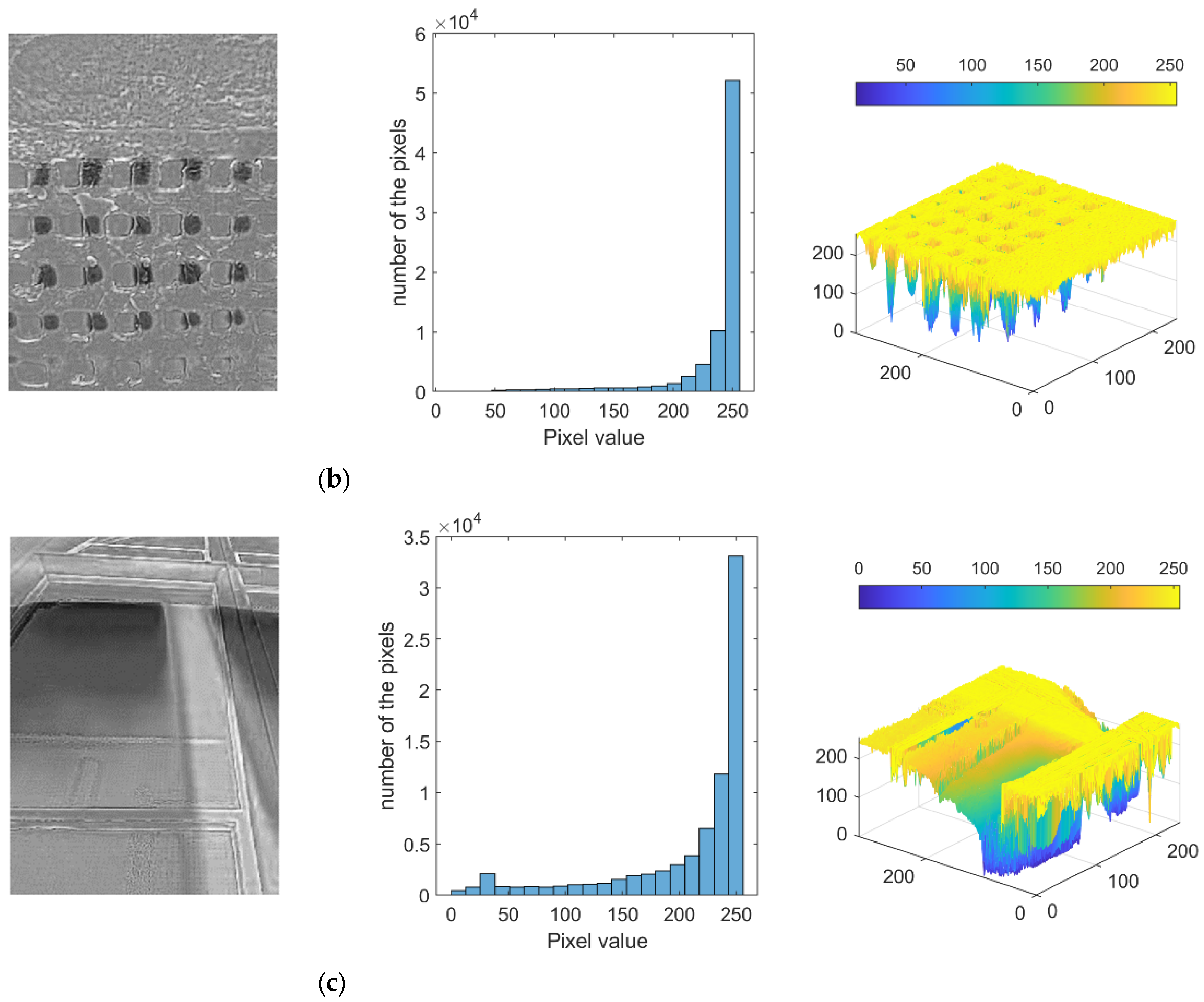
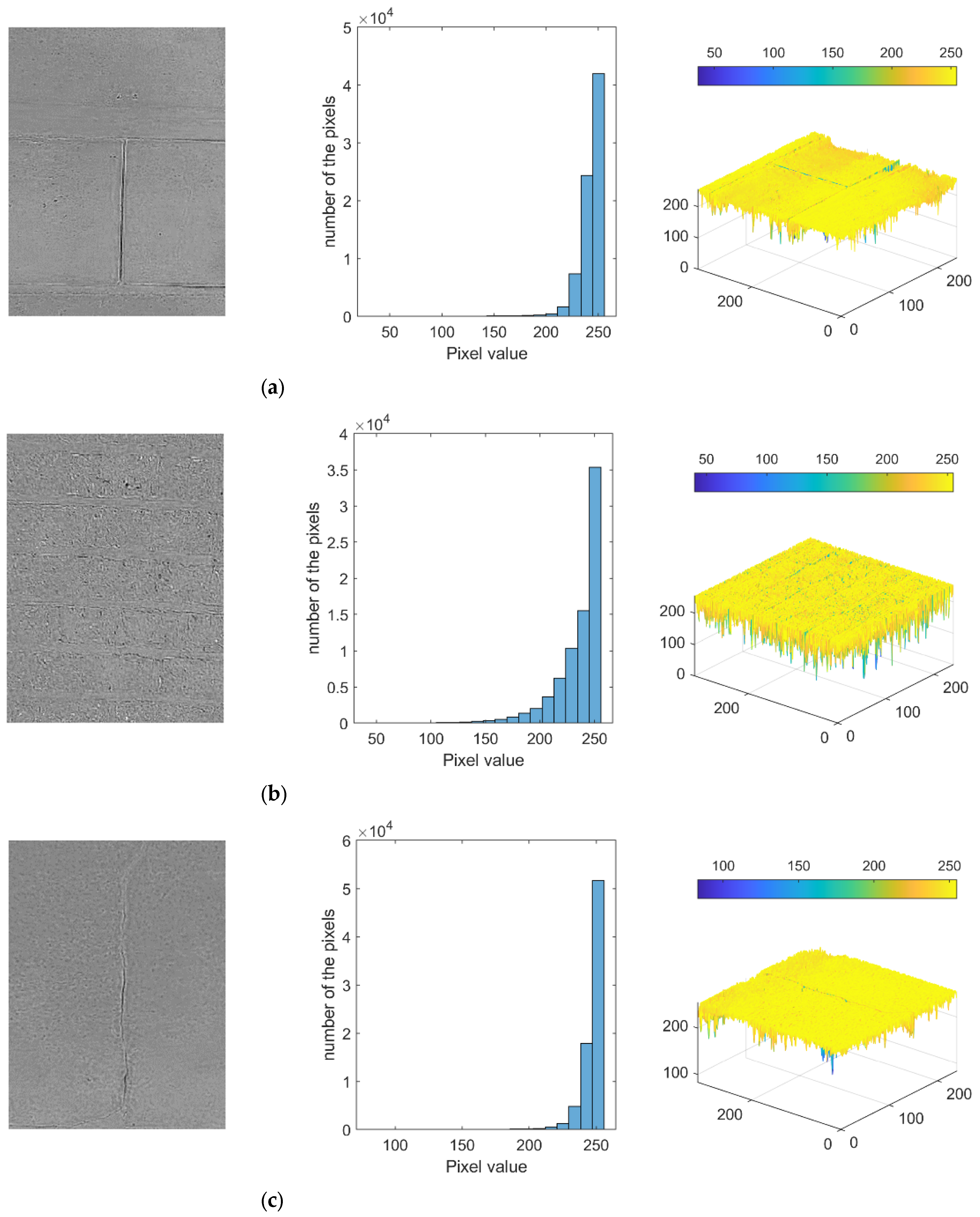
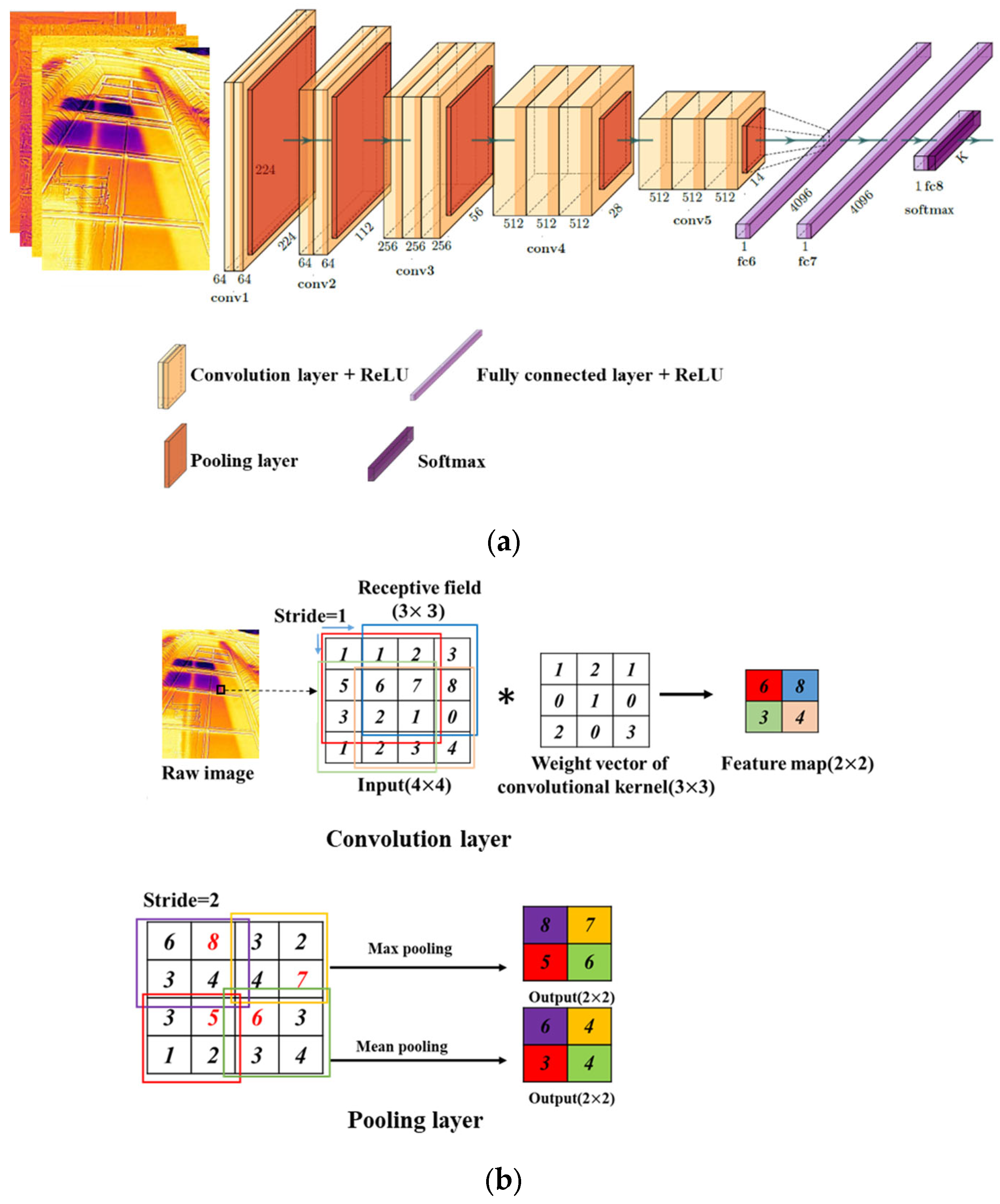
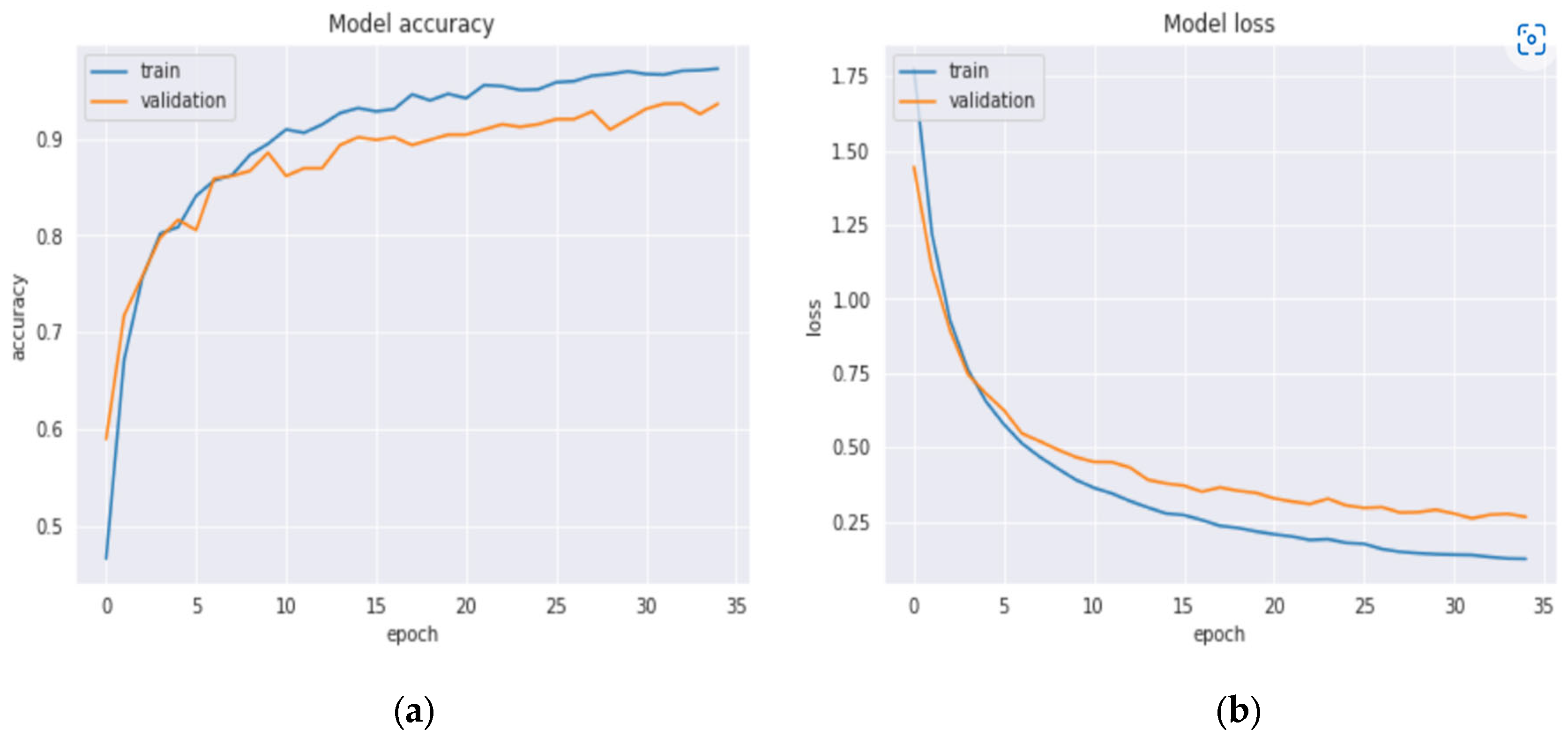
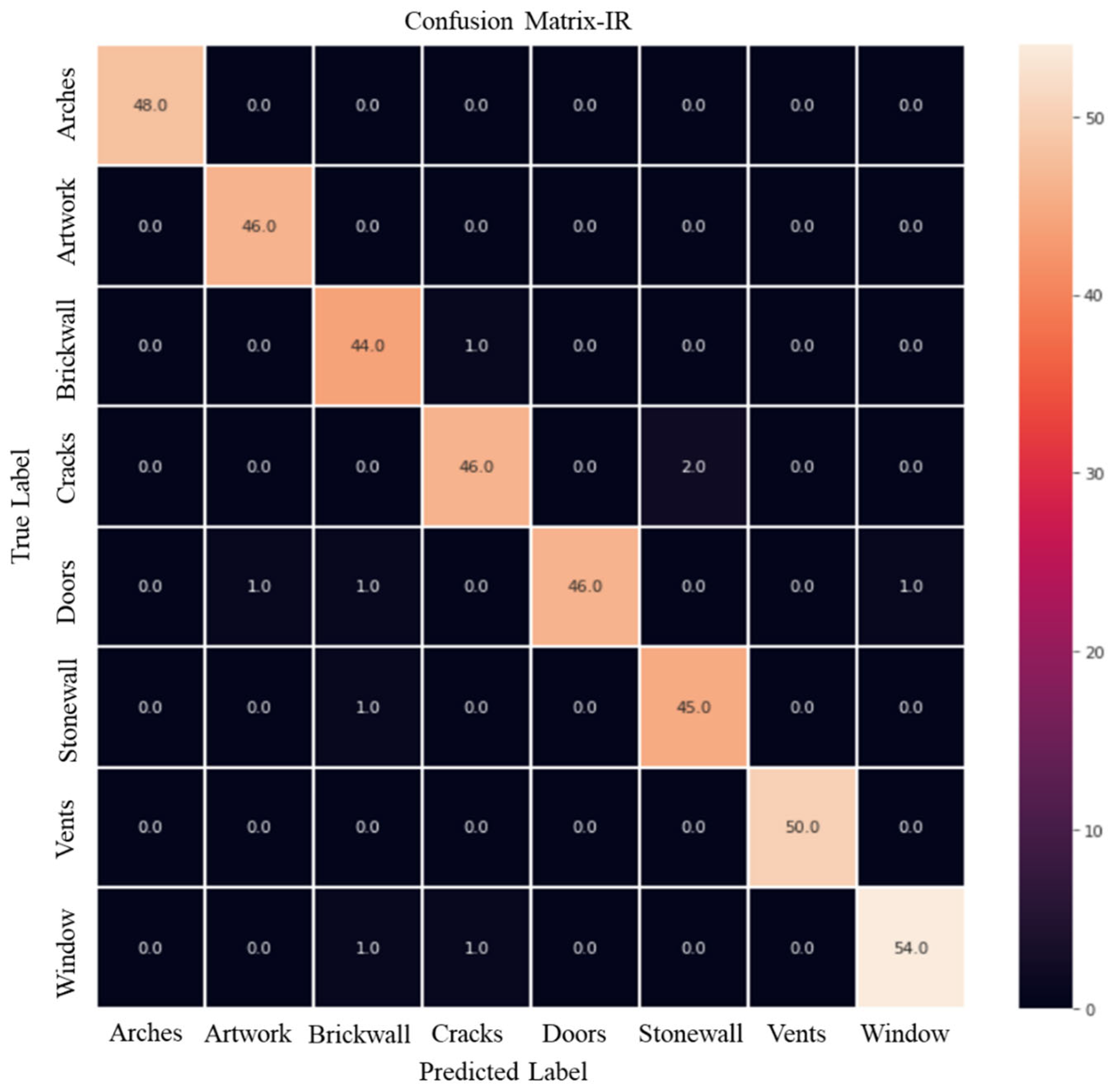
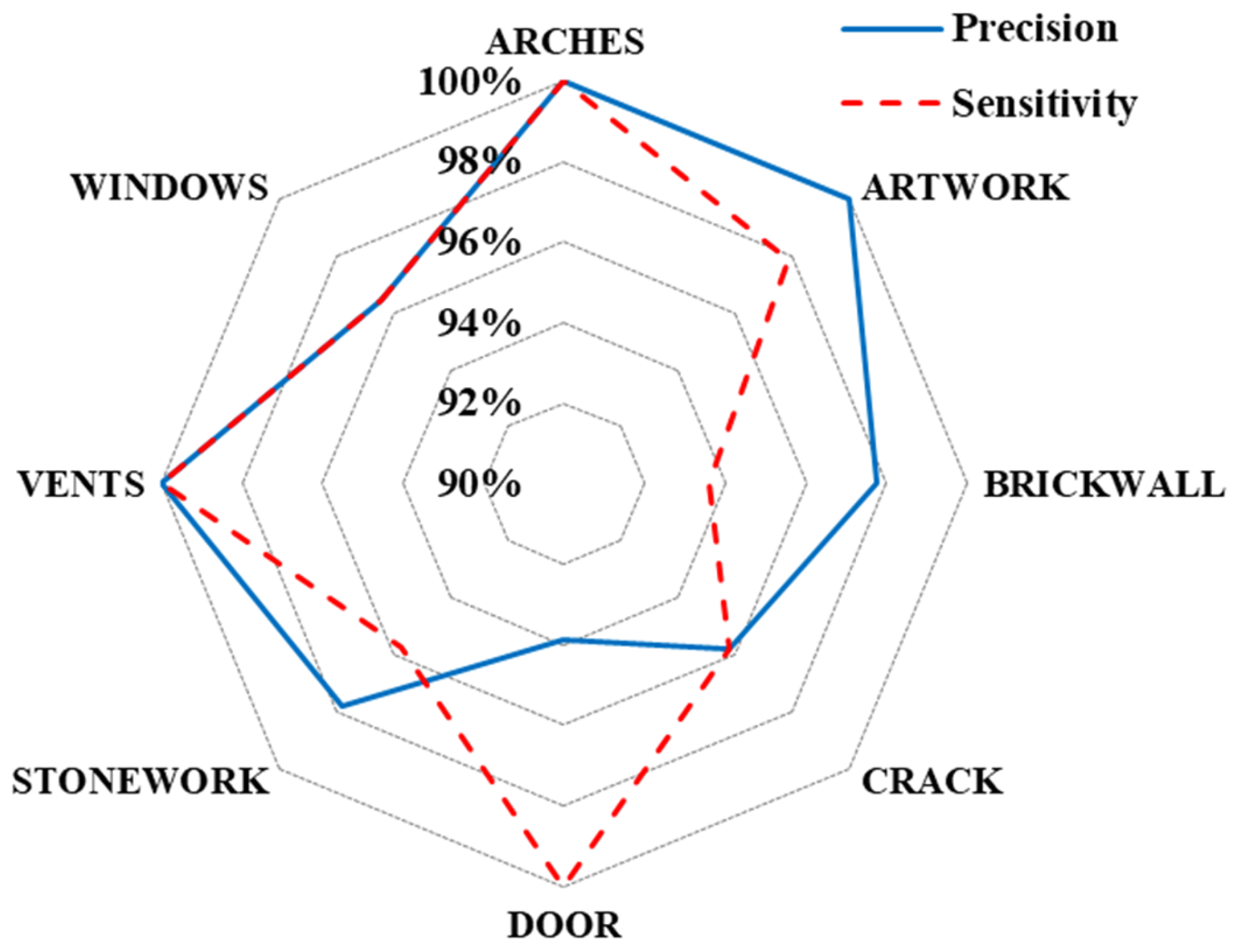
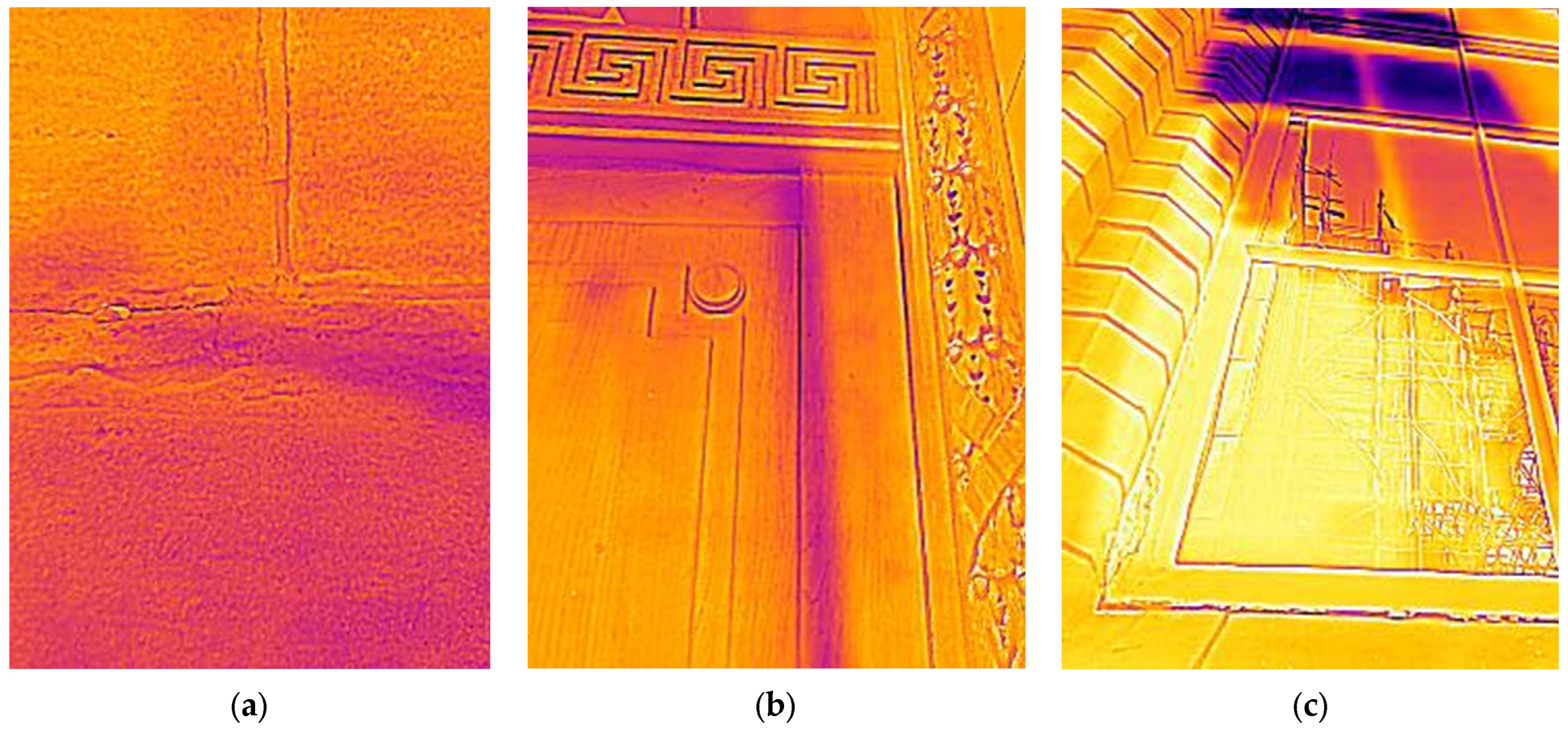
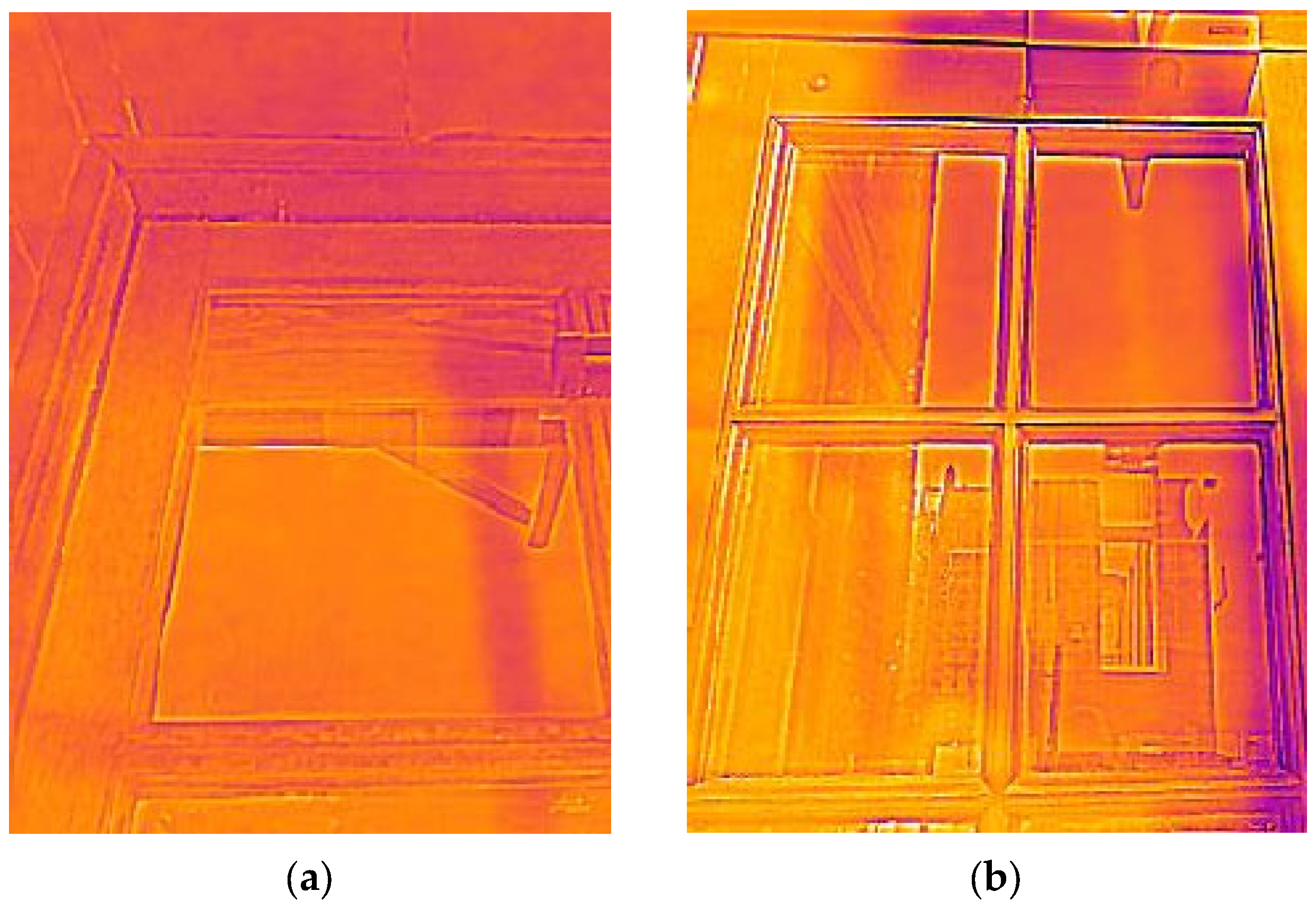
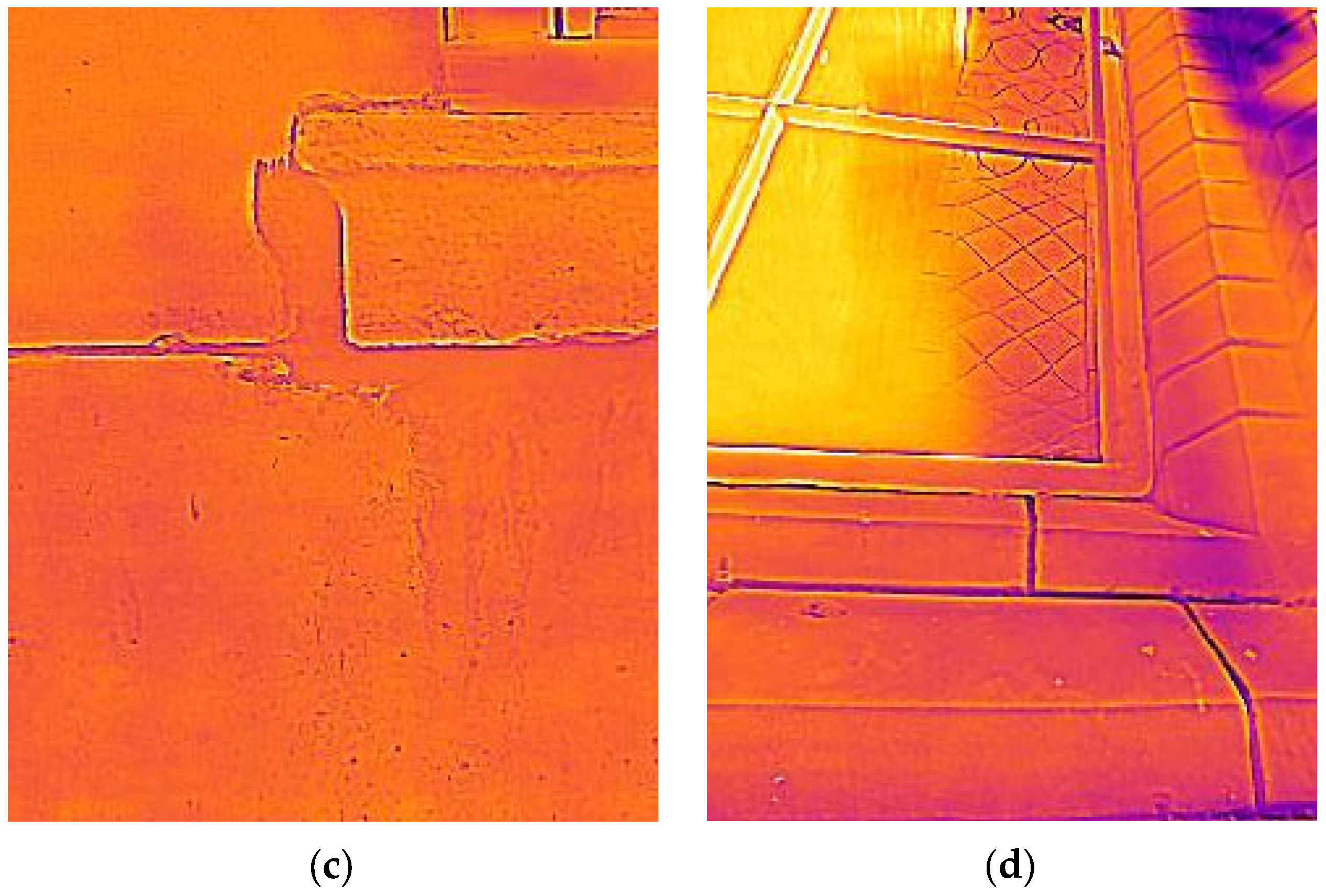
| Parameter | Technical Specifications |
|---|---|
| Dimension (L × W × H) | 210 × 64 × 81 mm |
| IR resolution | 80 × 60 pixels |
| USB standard | USB Type-C |
| Thermal sensitivity | <70 mK |
| Field of view (FOV) | 51° × 66° |
| Focus | Fixed |
| Frame rate | 8.7 Hz |
| Display resolution | 1600 × 1200 pixels |
| Image adjustment | Automatic |
| Accuracy | 50 °C to 100 °C (122 °F to 212 °F), acc. ±1.5 °C (±3 °F); 0 °C to 50 °C (32 °F to 122 °F) and 100 °C to 300 °C (212 °F to 572 °F), acc. ±2.5 °C (±5 °F); −25 °C to 0 °C (−13 °F to 32 °F), acc. ±3 °C (±7 °F) |
| Object temperature range | −25 °C to 300° C |
| Image modes | MSX® (Multi Spectral Dynamic Imaging), visual |
Disclaimer/Publisher’s Note: The statements, opinions and data contained in all publications are solely those of the individual author(s) and contributor(s) and not of MDPI and/or the editor(s). MDPI and/or the editor(s) disclaim responsibility for any injury to people or property resulting from any ideas, methods, instructions or products referred to in the content. |
© 2023 by the authors. Licensee MDPI, Basel, Switzerland. This article is an open access article distributed under the terms and conditions of the Creative Commons Attribution (CC BY) license (https://creativecommons.org/licenses/by/4.0/).
Share and Cite
Seo, H.; Raut, A.D.; Chen, C.; Zhang, C. Multi-Label Classification and Automatic Damage Detection of Masonry Heritage Building through CNN Analysis of Infrared Thermal Imaging. Remote Sens. 2023, 15, 2517. https://doi.org/10.3390/rs15102517
Seo H, Raut AD, Chen C, Zhang C. Multi-Label Classification and Automatic Damage Detection of Masonry Heritage Building through CNN Analysis of Infrared Thermal Imaging. Remote Sensing. 2023; 15(10):2517. https://doi.org/10.3390/rs15102517
Chicago/Turabian StyleSeo, Hyungjoon, Aishwarya Deepak Raut, Cheng Chen, and Cheng Zhang. 2023. "Multi-Label Classification and Automatic Damage Detection of Masonry Heritage Building through CNN Analysis of Infrared Thermal Imaging" Remote Sensing 15, no. 10: 2517. https://doi.org/10.3390/rs15102517
APA StyleSeo, H., Raut, A. D., Chen, C., & Zhang, C. (2023). Multi-Label Classification and Automatic Damage Detection of Masonry Heritage Building through CNN Analysis of Infrared Thermal Imaging. Remote Sensing, 15(10), 2517. https://doi.org/10.3390/rs15102517









